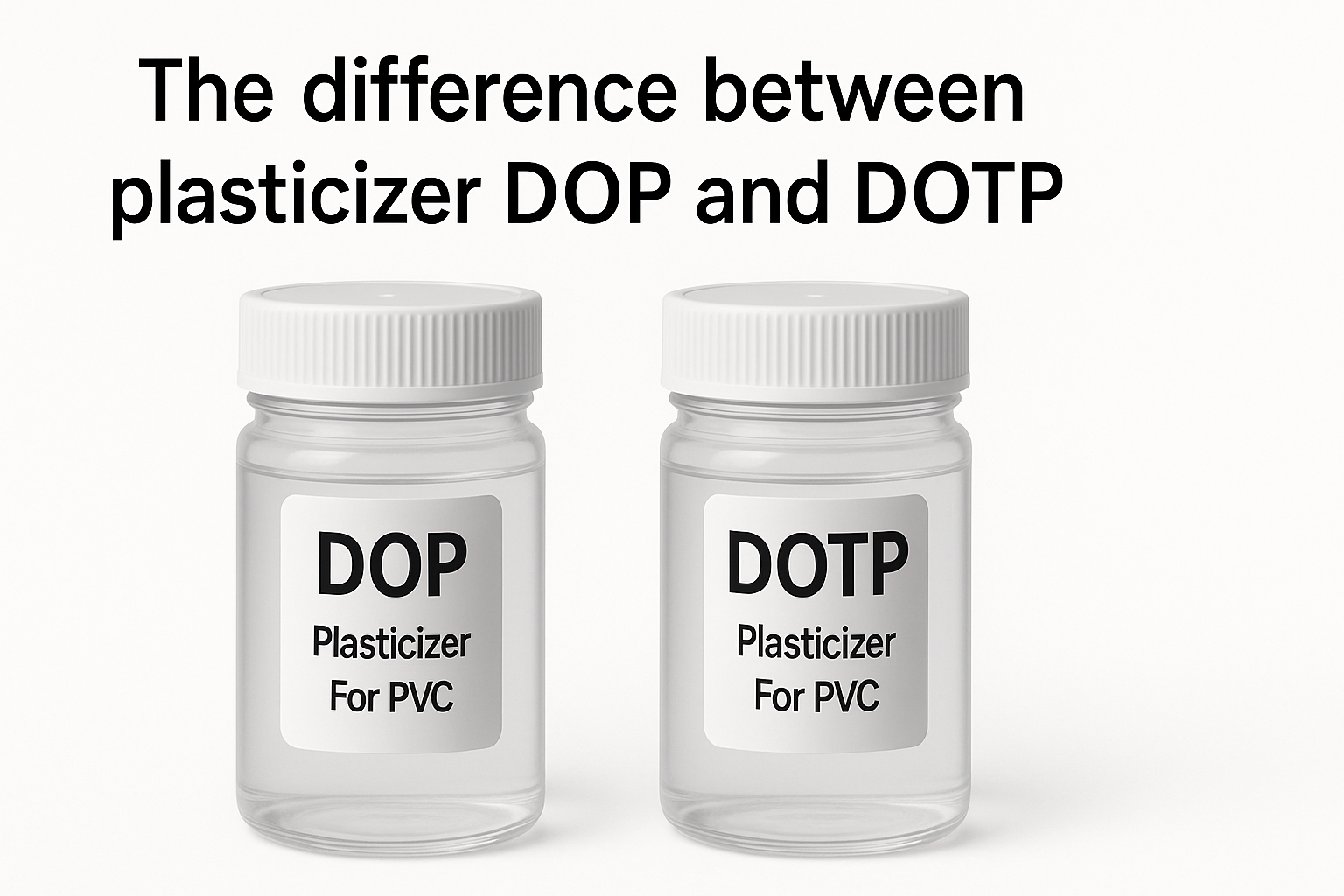What is the difference between plasticizer DOP and DOTP?
DOP (Dioctyl Phthalate) and DOTP (Dioctyl Terephthalate) are both widely used plasticizers in flexible PVC formulations, particularly for cable, film, and synthetic leather. However, they differ in chemical structure, regulatory compliance, migration behavior, and target applications.
1. Chemical Structure and Molecular Properties
DOP and DOTP share similar molecular weights and boiling points but differ in structure. DOP is an ortho-phthalate, while DOTP is a terephthalate, making DOTP a non-phthalate alternative with a different safety and regulatory profile.
| Property | DOP (DEHP) | DOTP |
|---|---|---|
| Chemical Name | Di(2-ethylhexyl) phthalate | Di(2-ethylhexyl) terephthalate |
| Structure Base | Ortho-phthalate | Terephthalate (para-isomer) |
| Molecular Formula | C24H38O4 | C24H38O4 |
| Molecular Weight | ~390.56 g/mol | ~390.56 g/mol |
| CAS Number | 117-81-7 | 6422-86-2 |
| Type | Phthalate | Non-phthalate |
2. Functional Performance in PVC
DOTP and DOP both offer good plasticizing efficiency, but DOTP performs better in low-migration, low-volatility, and weather-resistant applications. It also produces fewer volatile organic compounds (VOCs) and has lower fogging.
| Property | DOP | DOTP |
|---|---|---|
| Plasticizing Efficiency | High | High |
| Flexibility Retention | Good | Better over time |
| Migration Resistance | Low | High |
| Volatility | Higher | Lower |
| Heat Aging Performance | Moderate | Better |
| Electrical Resistance | Good | Very good |
3. Regulatory and Environmental Status
Due to health concerns, DOP has been restricted or banned in many applications, particularly in the EU and North America. DOTP is considered a safer, REACH- and RoHS-compliant alternative.
| Regulation Area | DOP (DEHP) | DOTP |
|---|---|---|
| EU REACH | SVHC Listed (Annex XVII) | Not listed |
| RoHS Compliance | Not allowed over 0.1% | Allowed |
| FDA Food Contact | Limited Use | Conditionally approved |
| Toys and Medical | Banned in many regions | Permitted under limits |
| Environmental Impact | Persistent, toxic | Lower toxicity, biodegradable trend |
4. Application Suitability
DOP is often used in general-purpose applications where cost is a priority and regulations are not stringent. DOTP is preferred in modern applications where durability, safety, and compliance are critical.
| Industry/Application | Preferred Plasticizer | Rationale | |
|---|---|---|---|
| Wire & Cable (General) | DOP or DOTP | DOTP for RoHS, DOP for domestic use | |
| Automotive Wiring | DOTP | Low fogging and long-term flexibility | |
| Medical Devices | DOTP | Non-phthalate status | |
| Toys & Food Contact | DOTP | Regulatory compliance | |
| General PVC Goods | DOP | Low cost, acceptable in unrestricted areas |
5. Market & Cost Considerations
DOP is less expensive and widely available, but DOTP is gaining market share due to environmental compliance and shifting customer demand for safer alternatives.
| Factor | DOP | DOTP |
|---|---|---|
| Cost per kg (approx.) | Lower | Slightly higher |
| Supply Availability | Very High | Increasing rapidly |
| Customer Preference | Declining (due to bans) | Growing in regulated markets |
| Lifecycle Value | Short-term focused | Better long-term durability and safety |
Conclusion
Use DOP for cost-sensitive, domestic, or non-regulated applications where price and efficiency matter most. Choose DOTP for export, consumer-safe, or long-life applications—especially where RoHS, REACH, or FDA standards apply.

